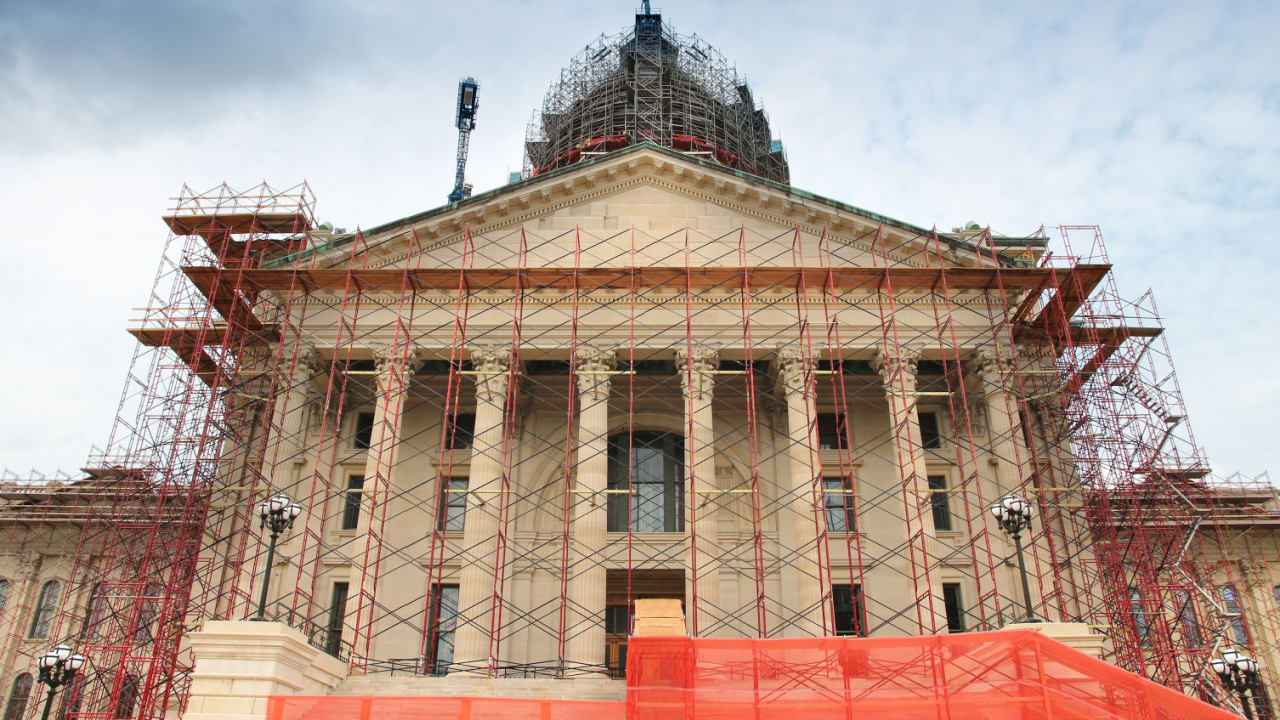
What Merit Shop Contractors Can Expect From the 2018 Midterm Election Results
The 2018 midterm elections were an important opportunity for Democrats to chip away at near-historic levels of Republican power at the state level, with the GOP controlling 67 of 99 legislative chambers, 33 governorships and 26 trifectas (i.e., single party control of both state legislative chambers and the governor’s mansion) heading into election night.
Many expected Republicans to regress to the median as Democrats defended just nine governorships (five incumbent candidates and four open races) while Republicans defended 26 governorships (13 incumbent candidates and 13 open races) and narrow majorities in 15 state legislative chambers.
Democrats achieved significant victories on election night, winning trifectas in seven new states (Nevada, Colorado, New Mexico, Illinois, New York, Connecticut and Maine), for a total of 14 Democrat trifectas. They also flipped Republican-held governorships in seven states (Nevada, New Mexico, Kansas, Illinois, Wisconsin, Michigan and Maine), totaling 23 states led by Democrat governors.
Democrats now control both legislative chambers in 18 states, after winning seven new legislative chambers (the Senate in Colorado, New Mexico, New York, Connecticut and New Hampshire; and the lower chamber in Minnesota and New Hampshire).
But election night wasn’t a complete disappointment for Republicans. The GOP picked up a new state trifecta in Alaska and played solid defense by maintaining control of legislatures in key battleground states like Iowa, Wisconsin, Michigan, Pennsylvania and Florida.
Historically, a wave election at the state legislative level occurs when one party loses at least 494 seats. Roughly 370 state legislative seats flipped from Republican to Democratic on Election Day, but Republicans flipped nearly 100 state legislative seats from Democrat to Republican. By comparison, during President Obama’s two terms in office, Democrats lost 968 state legislative seats, the largest net loss since World War II.
Despite Democrat victories on election night, the GOP will continue its decade-long dominance of state government and maintain 23 trifectas, 27 governorships, 62 of 99 legislative chambers and both legislative chambers in 31 states.
Consolidating Partisan Control
The 2018 midterm elections consolidated partisan control of states more so than any election in over a century. For example, Minnesota is now the only state with a split legislature, a political anomaly that hasn’t happened since 1914. As a result, states with Republican or Democrat trifectas are expected to advance partisan policies during 2019 legislative sessions.
In general, construction industry stakeholders in red states should anticipate passage of additional pro-growth policies and measures supporting fair and open competition. In contrast, stakeholders in blue states should prepare for tax hikes, increased regulations, changes to labor and employment laws, and the expansion of government-mandated project labor agreements and prevailing wage mandates that ultimately put merit shop contractors and employees at a disadvantage when competing for taxpayer-funded contracts for construction services.
Both red and blue states have an opportunity to address workforce development and the construction industry’s shortage of nearly 500,000 skilled laborers.
This is one of the areas addressed in Building America: The Merit Shop Scorecard (meritshopscorecard.org), an annual resource created by Associated Builders and Contractors that rates state laws, programs, policies and statistics of importance to the merit shop contracting community. Essentially, it highlights which states have created the conditions for growth and identifies areas where strategic improvements are needed.
Looking ahead, the 2020 elections are extremely important at the state level. Besides enacting critical policies, both parties are jockeying to control the state and federal redistricting process following the decennial census. The party in control of a state trifecta is likely to draw favorable state and congressional districts that will heavily influence which party maintains power throughout the 2020s in its statehouse and in the U.S. House of Representatives.
Conflicting Congressional Priorities
In Congress, the midterm elections delivered House Democrats their first majority since 2010, while Senate Republicans held on and gained two seats for a 53-47 majority for the 116th Congress.
Democrats outperformed in many Republican-held districts, flipping more than 40 seats from red to blue. Democrats also won in 30 districts that President Trump won in 2016, while Republicans were only able to win three races in Clinton districts.
While all 435 House seats were up for re-election, the Senate only had 35 seats in cycle and fared much better with an advantageous map for Republicans in Trump-popular states. Republicans were able to oust four Senate Democrat incumbents in Florida, Indiana, Missouri and North Dakota.
Maintaining the majority in the Senate ensures that the president’s appointments of federal officials and judges should move forward with relative ease. However, an issue facing the Senate will be the sizeable number of current Democratic Senators looking to challenge President Trump in the 2020 election.
With many of the incoming House committee chairs already stating their plans to investigate and increase oversight of the Trump administration, there likely will be an appetite for issuing subpoenas to agency heads and administration officials.
Despite this, the same House Democrats have expressed their desire to work with the president on investing in the nation’s infrastructure, with Speaker of the House Nancy Pelosi (D-Calif.) already touting a willingness to work with Republicans on an infrastructure package and the incoming House Transportation and Infrastructure Committee Chairman Peter DeFazio (D-Mass.) stating his intention of getting a bill through the House in the first six months of 2019.
How the 116th Congress proves to move forward despite conflicting priorities in the lower and upper chambers will be critical for the construction industry leading up to 2020. Regardless, the Democratic takeover of the House will certainly slow the administration’s progress in rolling back some of the most harmful and overly burdensome regulations facing the construction industry.
As for any potential infrastructure package, the devil lies in the details. With contentious views on both sides regarding funding streams for an infrastructure overhaul, and Democrats’ preferences for project labor agreements and direct federal spending in lieu of fair and open competition and public-private partnerships (or state and local control and funding streams), the two sides seem further from a deal than some of the Democratic leaders’ comments suggest.
Related stories








